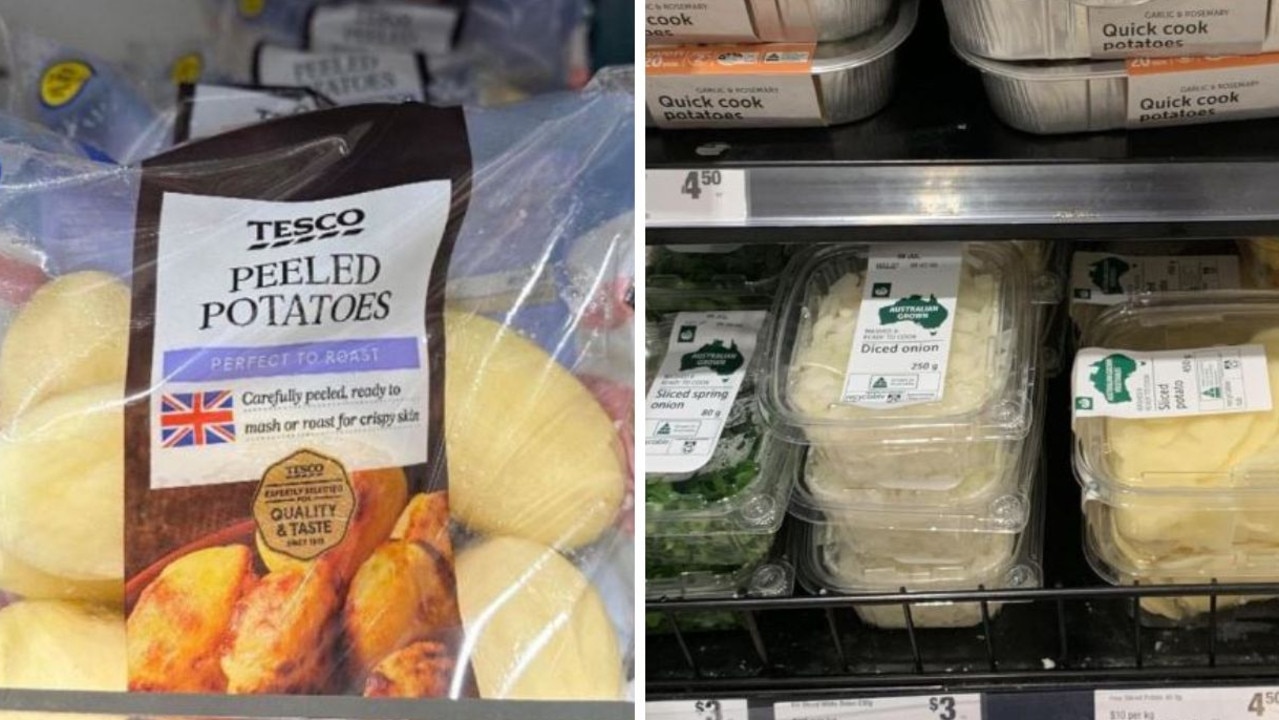Shock price of ‘essential’ grocery items in Indigenous communities
Remote Indigenous communities are paying more than double as much for essential grocery items than those in major cities, according to new research.

Food
Don't miss out on the headlines from Food. Followed categories will be added to My News.
A grocery haul of staple items has sparked outrage over the shocking price as cost of living pressures mount.
Mystery shopping from Consumer advocacy group Choice found remote First Nations communities across Western Australia and the Northern Territory are paying more than double for grocery items compared to major cities.
A list of nine “essential” items cost a staggering $99.38 across four First Nations communities in WA’s Great Sandy Desert and the Pilbara and the NT’s West Daly region and Tiwi Islands.
The price jumped up even further in the West Daly region, with the same items costing $110.82.
This is compared to just $44.70 in Woolworths, Coles, Aldi and IGA in all capital cities.
Bush Money Mob managing director of financial counselling Alan Gray told Choice investigative journalist Jarni Blakkarly that remote Aboriginal communities aren’t afforded the same services “mainstream Australians take for granted”.
“Once you get away from the bitumen, people living in remote Aboriginal communities get very few services that mainstream Australians take for granted,” Mr Gray said.
“Food and the options of healthy, affordable food is one of them.”


Mob Strong Debt Help financial counsellor and Boandik woman Bettina Cooper said those in remote communities simply have no options.
“When we’re travelling to remote communities there’s often only one choice of a local store. So whatever price is there is the price you pay,” Ms Cooper said.
She also said First Nations people must have equity when it comes to healthy living.
“When we’re talking about Closing The Gap, we’re talking about closing the gap so that First Nations people have equity in the ability to keep their family and live long healthy lives,” Ms Cooper said.
“A core part of having a healthy life is being able to afford and purchase good food to feed your family three square meals a day.
“If food isn’t priced correctly, then you don’t know that you can afford to do that and you might end up not being able to feed your family for the whole week or the whole day.”
Choice has called for the National Indigenous Australians Agency (NIAA) to place price caps on essential grocery items.
“Every Australian should be able to access food and groceries at fair and reasonable prices regardless of where they live, but many remote communities face significant challenges in accessing affordable food and groceries,” the submission put forth by Choice and a group of financial counselling and consumer advocacy organisations states.
“Communities living in remote areas should not be disadvantaged because of their geographical location.”
The submission urges the NIAA to consider mandated display prices, regulations for informal credit schemes, introduce a price monitoring tool, and subsidies for freight across the country.
“These initiatives will work to reduce grocery prices, improve accessibility and help close the gap for First Nations people living in remote communities,” the submission states.
An ACCC spokesperson currently conducting an inquiry into supermarkets.
“That inquiry involves a detailed analysis of supermarket pricing and procurement, to assess how supermarkets set their prices for consumers and the margins they are able to achieve including how they deal with their suppliers to achieve these margins,” they said.
The ACCC published its interim report on the supermarkets inquiry on 27 September 2024.
The ACCC will provide its final report on the supermarkets inquiry to the Treasurer by 28 February 2025.
NewsWire has contacted the NIAA for comment.
Originally published as Shock price of ‘essential’ grocery items in Indigenous communities








